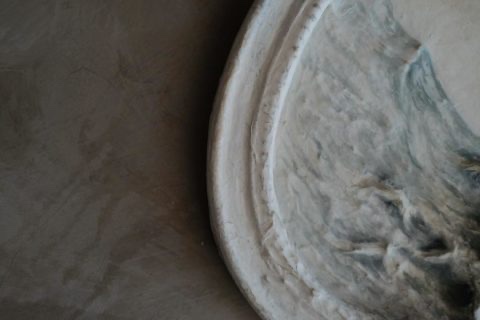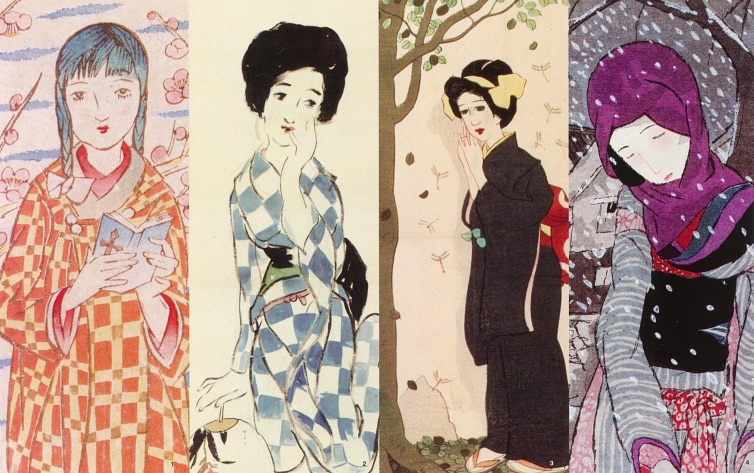
竹久夢二是活躍於大正時代的畫家,大正時代由1912年至1926年,才不過短短的15年,卻因社會興衰急變,孕育出獨有的藝術文化風格。明治末期,日本受西方的工業革命影響,大舉發展國內的鐵道及海運等,來到大正時代初期,商業及經濟急劇的發展趨勢未減,全國歌舞昇平,然而第一次世界大戰戰後的恐慌,加上1923年發生的關東大地震,社會氣氛頓見愁雲慘霧。物質上難得滿足,情緒感不安,加上歐洲浪漫主義的影響,人們對理想、夢幻的渴求更見強烈。大正浪漫,正是指當時的思潮與文化。夢二的畫作裡流露著濃厚的感性素質,因此被視為「大正浪漫」的代表人物。
夢二原為詩人,卻因寫詩無法餬口而轉而作畫,有說「夢二式美人」描畫著的不止是閉月羞花的女性,更是夢二心裡的詩句。東京的竹久夢二美術館,正舉行「竹久夢二的春、夏、秋、冬」展覽,嘗試把目光自夢二式美人抽離,感受夢二對四季之愛,閱讀以畫頌唸的一首首浪漫詩歌。
Females of different faces drawn by Yumeji Takehisa all share a similar temperament: they show a contemplating expression as if they are wandering in a dream, or desperately longing for someone. The smiles on their face are always beautifully sad. Wearing a simple kimono, the ladies sit in a feminine posture, with their hands elegantly positioned. These charismatic female bodies depicted by Yumeji Takehisa are called the “Yumeji’s beauties”.
As a painter, Yumeji Takehisa was active during the Taishō period. Taishō is an era from 1912 to 1926, which was a short yet intriguing period of 15 years. The rapid changes experienced by the Taishō society interestingly provided a breeding ground for art forms with strong personality. Towards the end of Meiji period, Japan was significantly influenced by the Industrial Revolution in Western countries, as a result, the country largely invested in the railway and maritime systems. Commercial and economic growth continued to dominate Japan until early Taishō period, when signs of peace and prosperity could be easily seen everywhere in the country. The good time however could only be sustained until people got negatively impacted by the post-WWI trauma and the 1923 Great Kantō earthquake. The country was then shadowed by gloominess. Many of the Japanese felt materialistically dissatisfied and emotionally insecure. Inspired by Romanticism imported from Europe, the discontentments evolved into a strong crave for dreams and ambitions — the unique Taishō Romanticism. Takehisa was one of the representative figures of the Taishō Romanticism for the vivid sentimentality in his painting.
Takehisa used to be a poet before becoming a painter. His economic condition made him give up writing poetry. Therefore some say the dazzlingly beautiful women in Takehisa’s drawings are only one layer of “Takehisa’s beauties”, the other layer is the poetry buried in Takehisa’s mind. Tokyo Yumeji Takehisa Museum is currently having “The Spring, Summer, Autumn and Winter of Yumeji Takehisa” exhibition. The exhibition intends to depart from “Takehisa’s beauties” and explores Takehisa’s love for the four seasons. In the exhibition, audience will have a chance to read lines of romantic poetry in the form of paintings.





